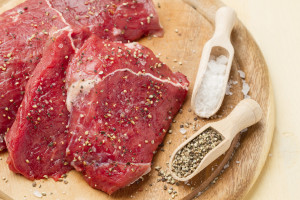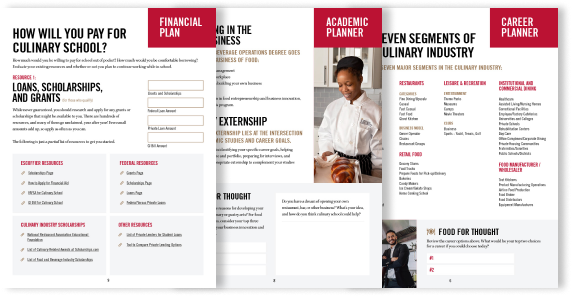4 Tips For Perfectly Cut Meat
 Americans love eating meat. In 2012, the average U.S. citizen consumed 71.2 pounds of red meat and 51.2 pounds of poultry, The Wall Street Journal reported. All of that meat represents a ton of time and effort, including picking, marinating and grilling that perfect cut steak or chicken. However, not enough chefs pay heed to how a hunk of meat is carved, which can often affect the quality and the overall flavor. Want the best cut of meat possible? Then dig in to the following tips and tricks:
Americans love eating meat. In 2012, the average U.S. citizen consumed 71.2 pounds of red meat and 51.2 pounds of poultry, The Wall Street Journal reported. All of that meat represents a ton of time and effort, including picking, marinating and grilling that perfect cut steak or chicken. However, not enough chefs pay heed to how a hunk of meat is carved, which can often affect the quality and the overall flavor. Want the best cut of meat possible? Then dig in to the following tips and tricks:
Cut against the grain
For years, some cookbooks have said to cut meat with the grain. However, that often results in slices or chunks that are tough to chew or are occasionally rubbery. The best bet, then, is to cut against the grain, according to Cooking Light. That means finding the muscle fibers of the meat and slicing perpendicular to them. This technique is especially important with notoriously “tough” pieces of meat, like skirt or flank steak, but can also apply to poultry and rib roasts. The end result is decidedly tender meat that can be chewed far more easily.
Freeze your meat
It might seem more logical to cut up meat that’s completely unfrozen. However, as Better Homes & Gardens explained, semi-frozen meat is going to slice far easier. As the water inside the meat freezes and crystallizes, it gives the cut an added bit of firmness and structure, thus making it easier for slicing. However, don’t let the meat sit in the freezer for too long; 45 to 60 minutes should be enough for a 1-inch thick cut of most meats. Perfectly frozen meat will usually have a bit of give when you push it with your thumb.
Pick the right meat
The meat cutting process actually begins long before you’re in the kitchen. Certain meats often slice better than others, and knowing the difference can effect both prep and cooking time. Luxury cuts of beef and pork often come from the loin, rump or rib. Meanwhile, working cuts are taken from the leg, shoulder and flank. Though they are more expensive, luxury cuts are usually easier to chop, as they’re generally more tender. However, it’s best to test the meat out while still in the market. Poke any side of meat and watch the reaction: The best meats spring quickly back into place.
Choose the right knife
Oftentimes, a chef is only as good as their knives. As Fine Cooking pointed out, cutting meat requires three basic knives:
- Chef’s knife: The workhorse of the kitchen, this knife is great for de-boning must cuts of meat.
- Cleaver: This broad, heavy blade is far more suited for larger pieces of meat, like a rack of ribs or an entire lamb.
- Boning knife: A more slim, narrow blade, this is especially great secondary option for de-boning, and it often requires less frequent sharpening.
More serious chefs may also want to look into purchasing a saw. However, be aware that using one requires a different level of physical activity.
Explore even more meat cutting techniques when you enroll in culinary courses online.
Online Culinary School Planner & Checklist
Online Culinary School Planner & Checklist
Find out what a culinary education can do for you.

What might a career in the culinary or pastry arts look like for you? Online culinary school is a fast, affordable way to launch a career in the culinary or pastry arts. Get the workbook to see how it could help you.







It is very hard to deal with the meat because i am very bad at choosing the meat and making that is why i stopped cooking it. These tips really help to have a knowledge o how we can actually start on working it. My friendly recently suggested that i can even order the meat online so i will check to order meat online and will definitely try the tips that you have mentioned to make the meat at home. Hope that goes well this time.